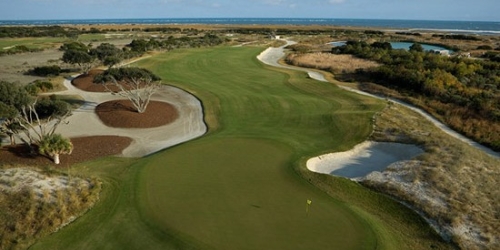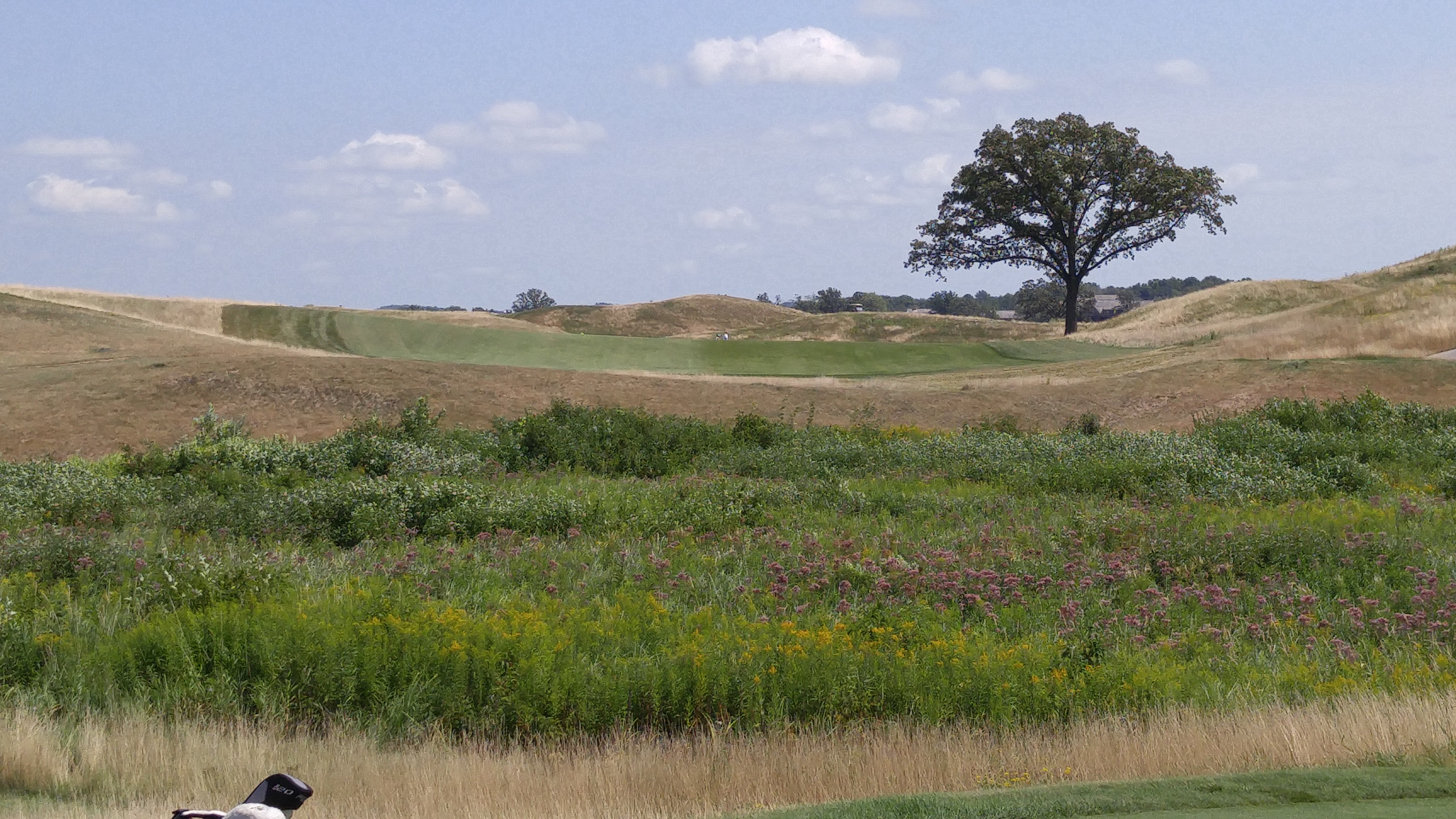Hop a ferry not far from where the world’s best will be teeing it up at this week’s PGA Championship and you can traverse Lake Michigan to the eastern shore. Nearly the same latitudinal location across the water from Whistling Straits you’ll find Arcadia Bluffs, Michigan’s modern answer to the seaside (or in this case, lakeside) links.
Ranked in Golf Digest’s Top 100 (it is 65th to Whistling’s 22nd), the comparison listed in the ranking sums up a modern architectural fascination with links:
Same again with Whistling Straits, the imitation links on the opposite side of Lake Michigan that Arcadia Bluffs resembles, except that the sand dunes at Arcadia are...
The key word there is “imitation.” In a year where the final three majors of the season have been played on layouts labeled as links courses, that definition seems as vague and broad as ever. To associate Whistling Straits with Saint Andrews seems lazy and borderline offensive. Is it time for a new definition?

Walking Kiawah’s Ocean Course for the PGA Championship in 2012 fit the feel of links, but lacked the execution. Links golf requires the golfer to play the ball on the ground. How you enter a green is more important than the number of yards to the hole.
What many discovered on the South Carolina coast that week, or what others witnessed already on the shores of Wisconsin and Michigan, were golf courses that required inland shotmaking, target golf, but with a view of the water.
“The pure definition of linksland is the windswept transition area between the sea and upland areas which has the characteristics of sandy soils and even dunes in many cases, excellent drainage, few to no trees, and grasses native to seaside environments,” says golf course architect Jason Straka of Fry/Straka Global Golf Course Design.
“Most purists will stick to this or a similar definition. It has become customary by many golfers, especially in North America, to call any golf course without trees a links golf course. At best, most in the golf industry will call those types of courses faux links.”
This isn’t to say that all forms of links golf doesn’t exist in the United States. Some of our most prized tracks (think Shinnecock), designed at the turn of the last century, utilize the natural contours and hazards of the land to create masterpieces.
Architects didn’t have the resources at their disposal 100 years ago to fight Mother Nature. Today, we move dirt like the players will remove pebbles from bunkers this week in Kohler.
When Pete Dye was challenged to build a new Ballybunion, he completely changed the topography of an innocuous plot of lakeside land to arrive at Whistling. Land was permanently altered and, to protect a course that would often play soft (Wisconsin climates differ a bit from Scotland and it took a lot of work to foster a sandy soil), greens were hidden. In the search of perfection, we are willing to do anything to arrive at our final destination.
To be clear, there is nothing wrong with that. The finished products are visual masterpieces, and often worth the pilgrimages and expense to play them, and pose on them. But, is it really links golf? How about we call it American Links.
“There will always be a debate as to whether the U.S. does have any pure or true links golf courses,” Straka adds. “Because of the popularity of true links golf and the natural, not manmade landscape in which they reside a lot of recent golf course owners have sought inland sites (think Sand Hills) which resembled true linksland, minus the sea.”
The 2015 major season will be remembered for several reasons: Jordan Spieth’s half Slam, Zach Johnson’s Hall of Fame clincher, Dustin Johnson’s weekend siestas and several others. But, subconsciously, our minds will link the year with, well, links.
The course that gave birth to the game followed up a U.S. Open that, despite bad greens, showcased a bigger, badder course that offered many links-ish traits. Had the wind blown at Chambers Bay, it would have been fun to see the angles of attack. Its elevation however, sculpted by the manipulation of over a million cubic yards of dirt, adds a new wrinkle to the term that has come to define its style.
The point is that all three courses played in rotation this year are extremely different even if our eyes perceive them to be the same. If we are to truly appreciate each major for what it is, recognize that each course provides a much different test in how the golfer must attack.
Major golf will return to Wisconsin in two years for the U.S. Open. Erin Hills doesn’t have many trees either and, well, that’s about it for
similarities when you truly break it down versus Whistling Straits.

“Erin Hills and Whistling Straits could not be more different,” added Dana Fry, Straka’s partner and an original architect of Erin Hills. “Very minimal dirt was moved at Erin Hills and Whistling Straits’ contours were completely manufactured."
He added, "Both are great golf courses but look, feel and play completely different. I would believe most people think they are the top two courses in the state and as different as they are and the character they both have is a major part of their charm.”
The 2017 Open will be great. This week has been great. Just don’t call it links golf.
American links? We may as well own it.


Add Comment